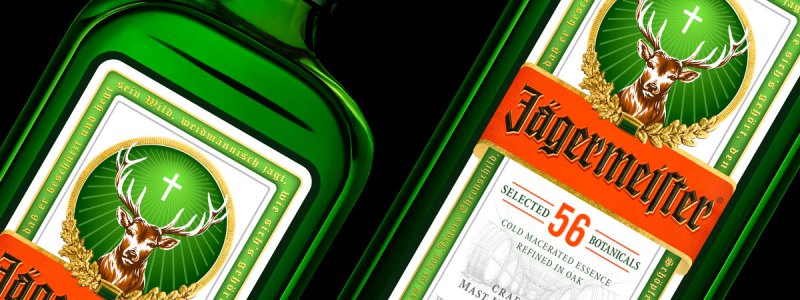

Over time, the Mast company had accrued some debt. Having to figure out a way to deal with that debt, Curt Mast decided to put a stop to vinegar production and refocus the company’s efforts on the wine business—a passion of his father’s. This helped, but by the 1930s, Mast knew he needed something else if his family’s business was going to be successful.
Through a series of trials and errors, Mast produced Jägermeister, a Kräutorlikör—an herbal liquor—composed of fifty-six different ingredients, including star anise, poppy seeds, licorice, ginger, ginseng, and juniper. While the entire recipe is a closely-kept secret, these are a few of the ingredients that the company has acknowledged using in the recipe, which has remained unchanged since 1934, when Mast first began selling his product. At the time, the product was served in a medicinal capacity, said to cure everything from a cold to an upset stomach and more.
The name Jägermeister, which translates to “Master Hunter,” was a job title for quite a while—up until 1934 when the Imperial Hunting Law (Reichsjagdgesetz) was redefined to apply to the senior foresters, game wardens, and game keepers that were in the employ of the German civil service.
The next thing Mast had to consider was the bottle. To figure out what bottle suited his new spirit best, he did what might qualify as one of the top ten coolest fact-finding processes in alcohol history: he bought a bunch of bottles and proceeded to drop them on his kitchen floor.
A label, too, would be necessary, as Mast wanted to sell the product and not just make a liqueur for himself and his family, and so he decided to pull from the name to create the iconic logo that we all immediately recognize today. The stag and the glowing cross refer to, most agree, Saint Hubertus, a 7th/8th Century Catholic saint who, (as legend has it) while on Good Friday, was in pursuit of a stag when it turned to face him. In between the stag’s horns was a glowing crucifix, which spoke to him and in no uncertain terms told him to seek out a specific bishop and turn his life around, otherwise he’d be on the train straight to hell. (While the label has stayed more or less the same, the company did roll out a new label, which you can see in the header image.)
As for production of the spirit itself, which takes about a year from initial production to aging and bottling—almost four hundred different quality checks are made to ensure a consistent product (three hundred eighty-three, to be exact). This includes everything from checking that the macerations (the processes that moved the flavors from herbs and spices into a neutral spirit) are on track to ensuring that the proportions of each ingredient are consistent to, naturally, making sure the flavor is what it should be.
And there you have it. Next time you’re bellying up to the bar, waiting for a round of iced shots of Jäger to share with your loved ones, don’t think of the Jersey Shore. Think instead that the shot you’re about to consume is for your health. As you raise your glass, lock eyes with whomever you’re drinking with and let out a hearty “Prost!” for good health and more shots.



